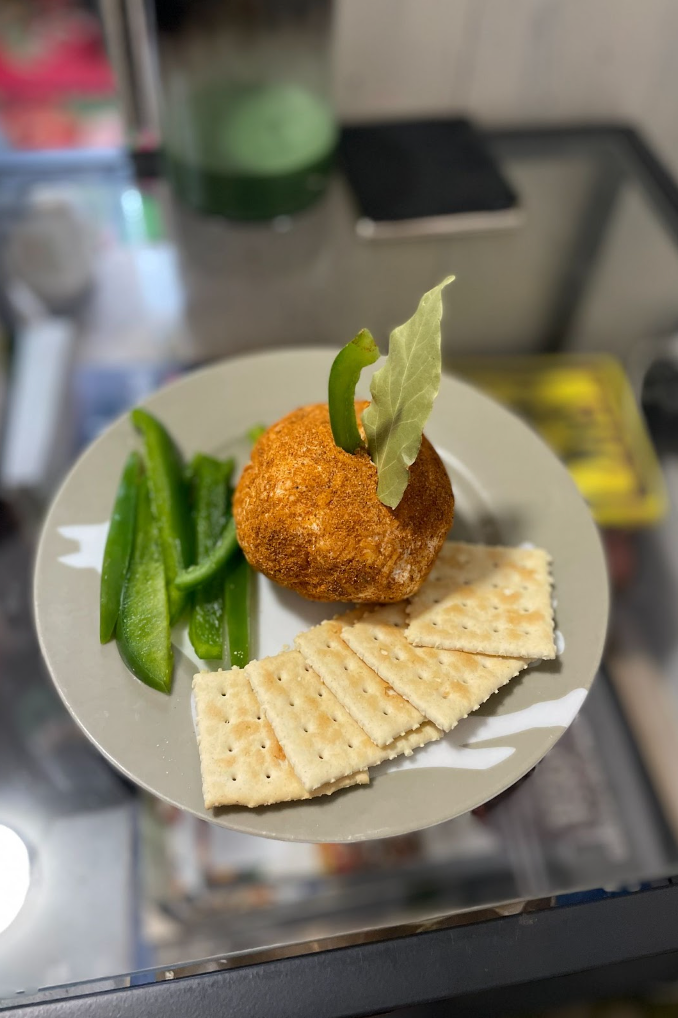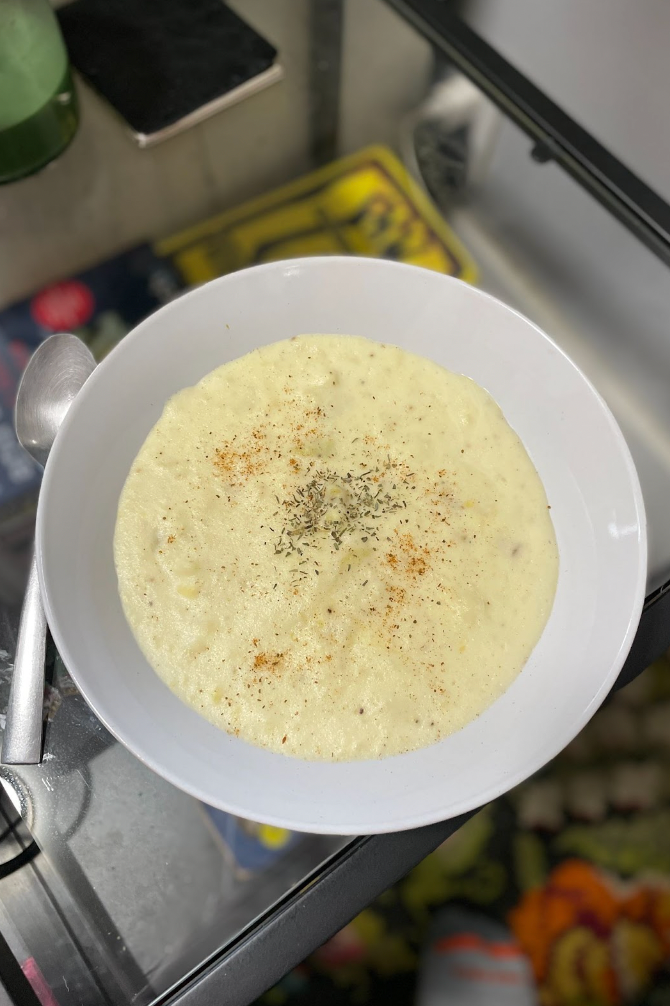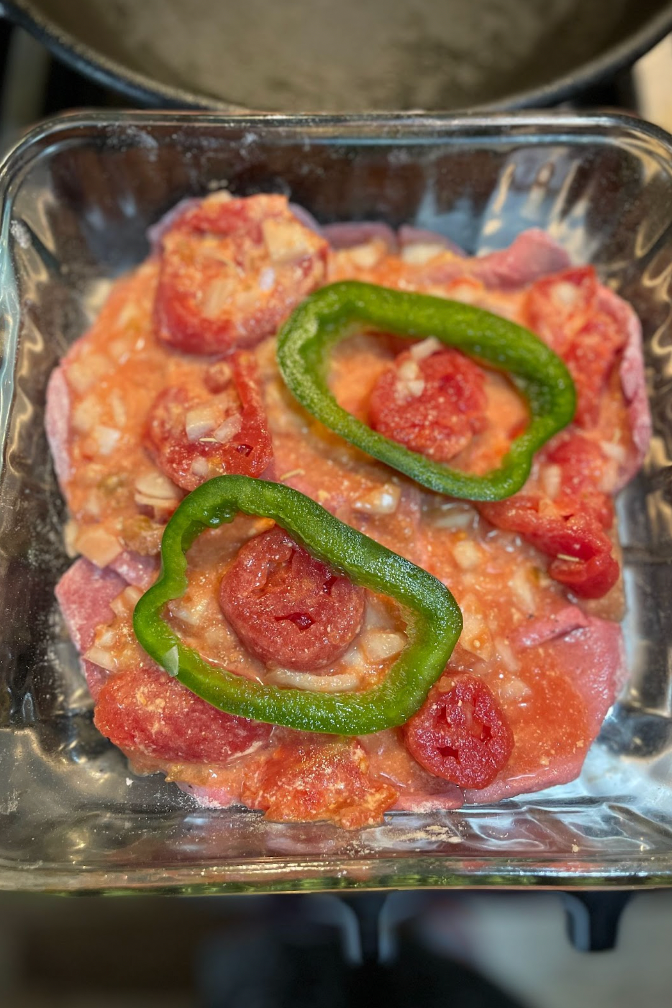Is any appliance more singularly American than the microwave? Accidentally invented by a Raytheon engineer named Percy Spencer in 1945, the microwave has played many parts in our prosperous post-war history: aspirationally expensive emblem of newfangled cooking, savior of overworked housewives, stealer of nutrients from raw ingredients, bringer of cancer, and finally, punchline.
There’s nothing inherently wrong with microwaves, now that we know they probably don’t strip away food’s nutrients or cause cancer. But, they’ve lost all the sexiness they had when they were first developed. Back then, microwaves were bigger than refrigerators and as expensive as cars; spooky space-age machines that cooked your dinner using science. Microwave cookbooks abounded for every diet, from kosher to low-fat. But now, as Jeremy Glass noted for Thrillist, few people use their nuke boxes for anything more labor-intensive than reheating.
That got me thinking: What if a microwave could be used not only for real cooking, but for preparing a delightful holiday feast? As an avowed holiday hater who rolls her eyes at the dining frenzy of New Year’s Eve, I decided to investigate. I’ve never liked holidays like New Year’s, where all you’re celebrating is your ability to binge drink—they command you to have fun with such ferocity that it’s almost impossible to actually do it. A grim, solitary evening of radiated casseroles sounded much more my speed.
My guide was Barbara Methven’s 1981 cookbook Microwaving for One & Two, one of many books by the author on the subject of microwave cooking. Bizarrely, it’s a real drop in the ocean—there are seemingly thousands of bleak microwave books from that time period, many of which go by the exact same—or a very similar—name. The most popular is Marie Smith’s Microwave Cooking for One, a much-memed homage to nuked food that’s often referred to as the “world’s saddest cookbook” for its earnest suggestion that single people soothe their woes with superheated gelatin.
Methven—who beat Smith to the punch by about five years—shared her concern about solitary dwellers. Her note to the reader explains that as of the book’s publication, the U.S. had more households of one and two than it had ever had before. Almost all the baby boomers had left their respective nests by then, and most of them were not booming babies of their own in anywhere near the same numbers as their parents, leaving unprecedented numbers of them alone. Microwaving, Methven claims, is ideal for such households, because microwaved meals can be prepped, cooked, and eaten all from the same piece of dishware. (I very much like her implication that single, childless adults are first and foremost lazy slobs.) She signs off by cheerfully asserting that a microwaved dinner for one can be “fast, simple, and intriguing,” but pointedly does not promise that it can also taste good.
I wanted to mimic an actual festive feast as best I could, and decided my New Year’s Eve menu would comprise four courses: a Port Wine Cheese Ball (appetizer), Vichyssoise (soup), Swiss Steak (entree), and Chocolate Cheese Pie (dessert). I chose this menu for two reasons. One, it would serve me just as well the next time I decided to throw a key party in 1974. Two, I wanted to include as varied a mix of ingredients as I could, hoping that even if these particular recipes weren’t to my taste, I could at least learn how different foods behave in the microwave when they’re being cooked from their raw state. Quickly getting hungry, I grabbed my 2018 GE Model JVM3160RF5SS Household Microwave Oven and got to work.
PORT WINE CHEESE BALL
What’s a party without a fun, festive hors d’oeuvre? And what’s more fun and festive than four bagels’ worth of cream cheese painstakingly molded into a sphere?
This recipe is light on the microwaving, requiring only 30 seconds of medium-power nuking to soften the cream cheese. This was the first time in my life that I’ve adjusted the power setting on my microwave—it’s always struck me as the sort of thing you should really be an expert to do. Thankfully, adjusting your microwave’s power settings is not a big deal, and I should’ve been doing it this whole time, because that seems to be how you avoid the dreaded “lava pockets” and “ice pools” of a poorly microwaved dish. Anyway, I softened up my cream cheese, mixed in my cheddar, and molded my slop ball for a quick chill in the fridge.
Nowhere in the recipe’s title does the author reveal the most important thing about this cheese ball, which is that it’s decorated to look like a cute little apple!


How darling is that? “Not very,” you may be saying if you’re a reasonably sane person. A reasonably sane person might also wonder whether a giant ball of cream cheese rolled in Old Bay is a suitable snack for just one diner.
This tasted fine. You already know whether you like cream cheese and cheddar cheese. There were no surprises.
Rating: 6/10. It’s boring, but there’s nothing technically wrong with it.
VICHYSSOISE
Hang on. Vichyssoise is a chilled potato soup! What are you playing at, Barbara Methven’s Microwaving for One & Two? But before I could tear all the pages out of my book and storm out of the room in a fury, I realized that the potato here is prepared for its soupification with a four-minute trip to the microwave. I called 911, told them I no longer needed emergency assistance, and got to work. I then whipped the microwaved potatoes into butter, milk, and the troublingly minimal amount of seasoning that the recipe called for.
Here is my freshly chilled vichyssoise.


…Well that doesn’t look very good, does it? Part of the problem is that I don’t have the electric mixer the recipe requires for blending the soup. I used my immersion blender instead, and the potato got predictably gummy when it should’ve been, well, soupy. But I enjoyed being able to fully cook the potato in less than five minutes, when it would’ve had to spend an hour or so in the oven to achieve a comparable level of softness. Plus, the soup tasted fine, even if it badly needed seasoning. How wrong can you go with potato, butter, and milk?
So, the cheese ball was fine, and the vichyssoise was fine. Two courses in, and I was well on my way to an okay holiday evening, which is more than I can say for many of the New Year’s parties I’ve attended over the years.
Rating: 5/10. Gross texture, okay taste, but points added for the speed of potato cooking.
SWISS STEAK
If the first two courses were both fine, the third was certainly something else! I had never heard of Swiss steak, but correctly suspected it to be one of those mostly extinct American housewifeish beef-and-gravy foods, where the beef is a cheap supermarket cut and the other ingredients all come from cans. This is not a criticism—I love the alchemy of transforming cheap and canned ingredients into a tasty meal. But that alchemy did not happen with the microwaved Swiss steak.
The dish’s name is not Swiss, as in Switzerland. Rather, it refers to the technique of tenderizing the bottom round beef by pounding it thin, also known (apparently) as “swissing.” Once my sad little beef slabs were, ugh, swissed to perfection, I made the sauce. That might sound straightforward, but you try finding such unchic ingredients as French dressing and stewed tomatoes in a Bushwick supermarket. The Swiss steak’s only fresh elements were diced onions and two green pepper rings that I was directed to place on top “if desired.” And believe me, I desired.


A quick sugar inventory: the stewed tomatoes and French dressing both contain sugar, and the onions and green peppers are on the sweet side, too. This was going to be one sweet steak. And it would spend the most time in the microwave by far: 25 minutes on one side, 25 on the other. This was at medium power, but still. Who cooks a half pound of beef for 50 minutes?
I was full of misgivings, but I trusted Methven’s expertise. And I shouldn’t have, because look at this offense against the Lord:


The last step of this recipe is to spoon the sauce over the top. You can see that I did my best, but the sauce pretty much dried up after the first 25 minutes. For a moment, I allowed myself to believe that the black coating on top of my meat was a delicious sear. I was disabused of that notion right quick when the “sear” bent my steak knife. Eating this was like gnawing on a tomato-flavored belt. I offered a sauceless piece to the dog and she turned her head away in disgust.
Rating: 2/10. I don’t eat belts.
CHOCOLATE CHEESE PIE
By this point, my microwave was rumbling in muted protest every time I used it and my stomach was doing the same. I was not looking forward to this pie, which called for semisweet chocolate and kirsch—a distilled spirit made from sour cherries—to be blended with cream cheese and poured into a graham cracker crust. But that just shows what a fool I was, because this was delicious.
The first step was to microwave up a graham cracker crust by mixing butter and graham crackers in a pie plate. Then I made the pie filling using Baker’s chocolate and Grand Marnier instead of kirsch. I was wary of long microwave times after what had happened with the steak, but the pie “baked” for a more modest 15 minutes, and only on 30 percent power. Because I was now a power settings expert, I felt okay about this, rumbling or no rumbling. (Apparently the sound could indicate a “faulty magnetron,” but I decided not to worry about that, because it sounded really made up.)
While my pie was microwaving, I whipped up the topping, a sour cream/sugar mixture that I bulked up with the last of my cream cheese. Ultimately, I still didn’t have enough to cover the whole pie. Proportions appear to be an issue with many of the microwave-for-one desserts—it’s fairly straightforward to scale a meat or vegetable recipe from family-sized to single-sized, but onerous to do the same for a baked dessert, where the ratios of ingredients are unimpeachable.
Regardless, I was pleased with how nicely the pie set in the microwave:


And pleased enough, too, with the texture of the filling inside:


There are obvious problems, sure. The dots of unmixed cream cheese could’ve probably been avoided if I’d let it come to room temperature before using it and mixed it into the batter more carefully. The graham cracker crust was also too sparse—it’s been all but absorbed into the filling at the bottom. I’m not saying I’d serve it to guests, but look—the texture is basically right and it tasted great! Deep chocolate flavor with Grand Marnier is always a winning combination, and I’d be lying if I said I wasn’t eating a piece right now.
Rating: 8/10. Will tweak slightly and make again.
Interestingly, despite its title, most of the recipes in Microwaving for One & Two are for two, with suggestions at the end for scaling them down. If I was a single person trying to feel better about how hard it is to shop and cook for one, this might send me over the edge since it only further highlights that you are alone. Dreadfully alone. There’s nothing wrong with being single or having most of your meals by yourself, but somehow, this cookbook—whose purpose is sharing solitary recipes—does not get that point across.
I was hoping, too, for a more varied range of techniques. Most of the entrees in this book are casseroles, sometimes posing as non-casseroles with the aid of creatively deployed hoagie rolls or skewers. Can a microwave, used with forethought and care, truly mimic that sear I almost thought I had on the Swiss steak? Can it imitate a deep-fried texture or a char? Pie notwithstanding, this book mostly told me that microwaving is indeed the saddest form of food preparation. It can offer single adults bad-tasting gruels and not much else.
This was frustrating because, despite Methven’s assertion that this book is for slovenly adults living in sin, lots of people rely on microwaves. If you’re living in a motel with only a microwave and hot plate to cook with, you’re likely starved for a little freshness and home-cooked coziness in your meals. This cookbook will not un-starve you under those circumstances, unfortunately. Its recipes lean on the microwave’s speed and simplicity, but they don’t stretch its capabilities as far as I’d hoped. And you deserve better.
As such, my New Year’s feast for one wasn’t that good. But it wasn’t that bad, either! The pie was better than it had any right to be, and the vichyssoise and cheese ball were both totally passable. True, the steak was grim, but I still call this meal a net win. I was able to nuke myself up a little holiday spirit, and that’s all I wanted.
https://news.google.com/__i/rss/rd/articles/CBMiXWh0dHBzOi8vc2xhdGUuY29tL2h1bWFuLWludGVyZXN0LzIwMjIvMTIvbWljcm93YXZlLWNvb2tib29rLXNhZC1zaW5nbGVzLW5ldy15ZWFycy1kaW5uZXIuaHRtbNIBAA?oc=5
2022-12-29 20:30:00Z
CBMiXWh0dHBzOi8vc2xhdGUuY29tL2h1bWFuLWludGVyZXN0LzIwMjIvMTIvbWljcm93YXZlLWNvb2tib29rLXNhZC1zaW5nbGVzLW5ldy15ZWFycy1kaW5uZXIuaHRtbNIBAA
Bagikan Berita Ini

















0 Response to "Does microwaving food destroy nutrients: No, but some say it will destroy your loneliness. - Slate"
Post a Comment